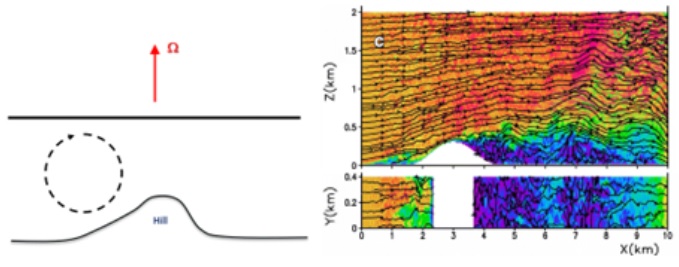Interaction of topography with rotation, convection and magnetic fields
- Academic lead
- Steve Tobias, Maths
- Co-supervisor(s)
- Amir Khan, Civil Eng, Srikanth Toppaladoddi, Maths
- Project themes
- Geophysical and Astrophysical Flows, Underpinning Methods for Fluid Dynamics
Understanding convection is important in a range of geophysical problems. For example, in the interior of the Earth in the fluid outer core or in the Earth’s atmosphere convection is responsible for a range of turbulent phenomena (including the driving of large-scale flows). Often the convection is on large scales, so the effects of rotation can be important. However, convection is usually modelled using an idealised paradigm of flow between two smooth boundaries. This is never the case in realistic geophysical situation and the effects of topography (or roughness) can play an important role. The addition of rotation can have significant consequences, with the effects of inhomogeneities propagating into the domain. This project involves the study of the effects of roughness and topography on rotating convection using high performance computation of the equations using Lattice-Boltzmann methods. These methods are specifically adapted for the modelling of flows with non-standard boundaries. The project will examine the role of topography in modifying the heat transport and the driving of mean flows. If time permits it may be possible to examine the robustness of so-called “topologically protected” convective states in convection and the interaction of convection with magnetic fields. 
